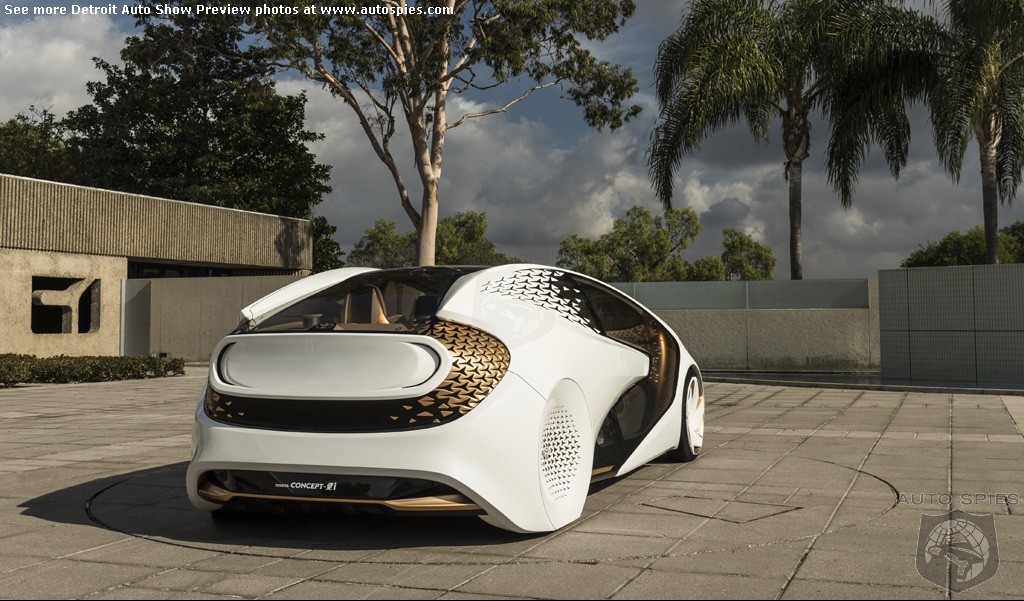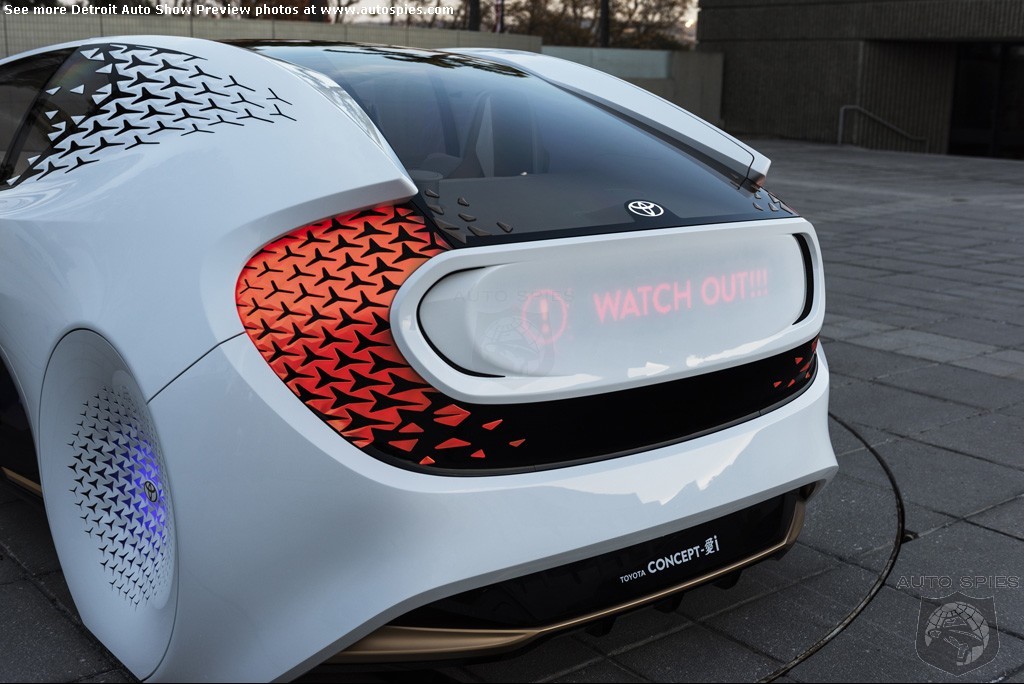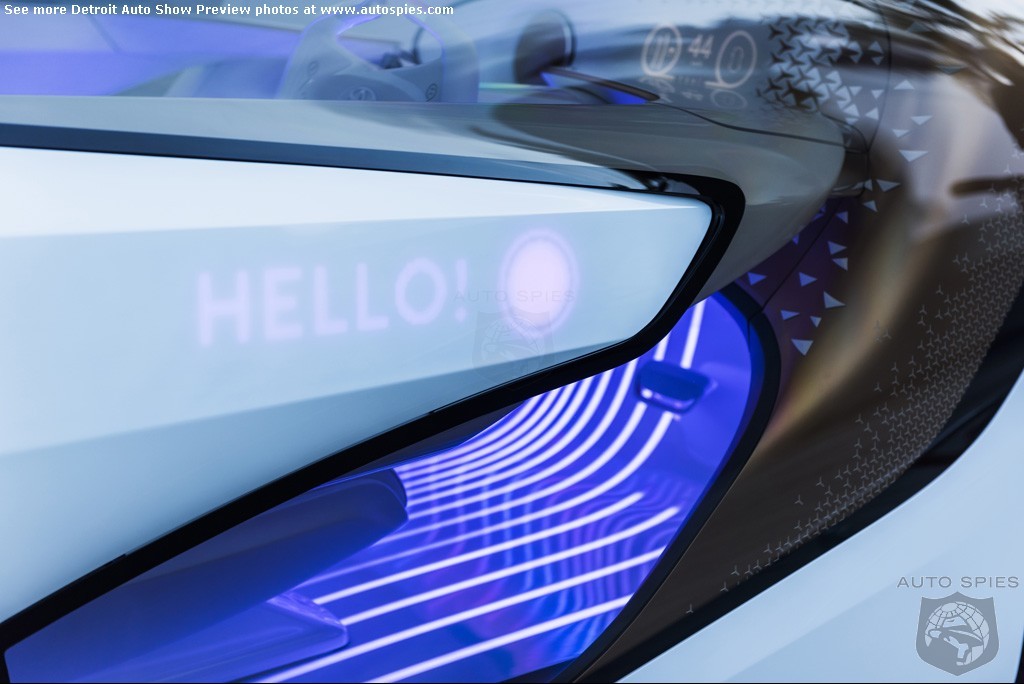Toyota's press release follows:
Toyota Concept-i Makes the Future of Mobility Human
Designed from the inside out to foster a warm and friendly user experience
Advanced artificial intelligence learns from and grows with the driver
On-road evaluation within the next few years in Japan
January 04, 2017
Las Vegas, Jan. 4, 2017 -- Imagine if the vehicles of the future were friendly, and focused on you. That’s the vision behind Toyota’s Concept-i. Announced today at the 2017 Consumer Electronics Show in Las Vegas, the groundbreaking concept vehicle demonstrates Toyota’s view that vehicles of the future should start with the people who use them.
The 2017 Detroit Auto Show photo galleries are sponsored by Lexus.
Toyota Concept-i

Designed by Toyota’s CALTY Design Research in Newport Beach, Calif., and with user experience technology development from the Toyota Innovation Hub in San Francisco, the Concept-i was created around the philosophy of “kinetic warmth,” a belief that mobility technology should be warm, welcoming, and above all, fun. As a result, the concept was developed with a focus on building an immersive and energetic user experience. What’s more, Concept-i leverages the power of an advanced artificial intelligence (AI) system to anticipate people’s needs, inspire their imaginations and improve their lives.
“At Toyota, we recognize that the important question isn’t whether future vehicles will be equipped with automated or connected technologies,” said Bob Carter, senior vice president of automotive operations for Toyota. “It is the experience of the people who engage with those vehicles. Thanks to Concept-i and the power of artificial intelligence, we think the future is a vehicle that can engage with people in return.”
Built around the Driver Vehicle Relationship
At the heart of Concept-i is a powerful AI that learns with the driver to build a relationship that is meaningful and human. More than just driving patterns and schedules, the concept is designed to leverage multiple technologies to measure emotion, mapped against where and when the driver travels around the world. The combination gives Concept-i exceptional ability to use mobility to improve quality of life.
What’s more, the AI system leverages advanced automated vehicle technologies to help enhance driving safety, combined with visual and haptic stimuli to augment communication based on driver responsiveness. While under certain conditions users will have the choice of automated or manual driving based on their personal preference, Concept-i seamlessly monitors driver attention and road conditions, with the goal of increasing automated driving support as necessary to buttress driver engagement or to help navigate dangerous driving conditions.
Designed to Help Make Technology Human
To help ensure that even the most cutting-edge vehicle technology remained welcoming and approachable, CALTY designers built Concept-i from the inside out, starting with a next-generation user interface that serves as a platform for the vehicle’s AI Agent, nicknamed “Yui”.
The interface begins with the visual representation of Yui, designed to communicate across cultures to a global audience. With Yui’s home centered on the dashboard, Concept-i’s interior emanates around the driver and passenger side and throughout the vehicle in sweeping lines, with interior shapes designed to enhance Yui’s ability to use light, sound and even touch to communicate critical information.
In fact, Concept-i avoids screens on the central console to reveal information when and where it’s needed. Colored lights in the foot wells indicate whether the vehicle is in automated or manual drive; discrete projectors in the rear deck project views onto the seat pillar to help warn about blind spots, and a next-generation head up helps keep the driver’s eyes and attention on the road.
Even the exterior of the vehicle is designed to enable Concept-i to engage with the world around it. Yui appears on exterior door panels to greet driver and passengers as they approach the vehicle. The rear of the vehicle shows messages to communicate about upcoming turns or warn about a potential hazard. The front of the vehicle communicates whether the Concept-i is in automated or manual drive.
Toyota Concept-i










































